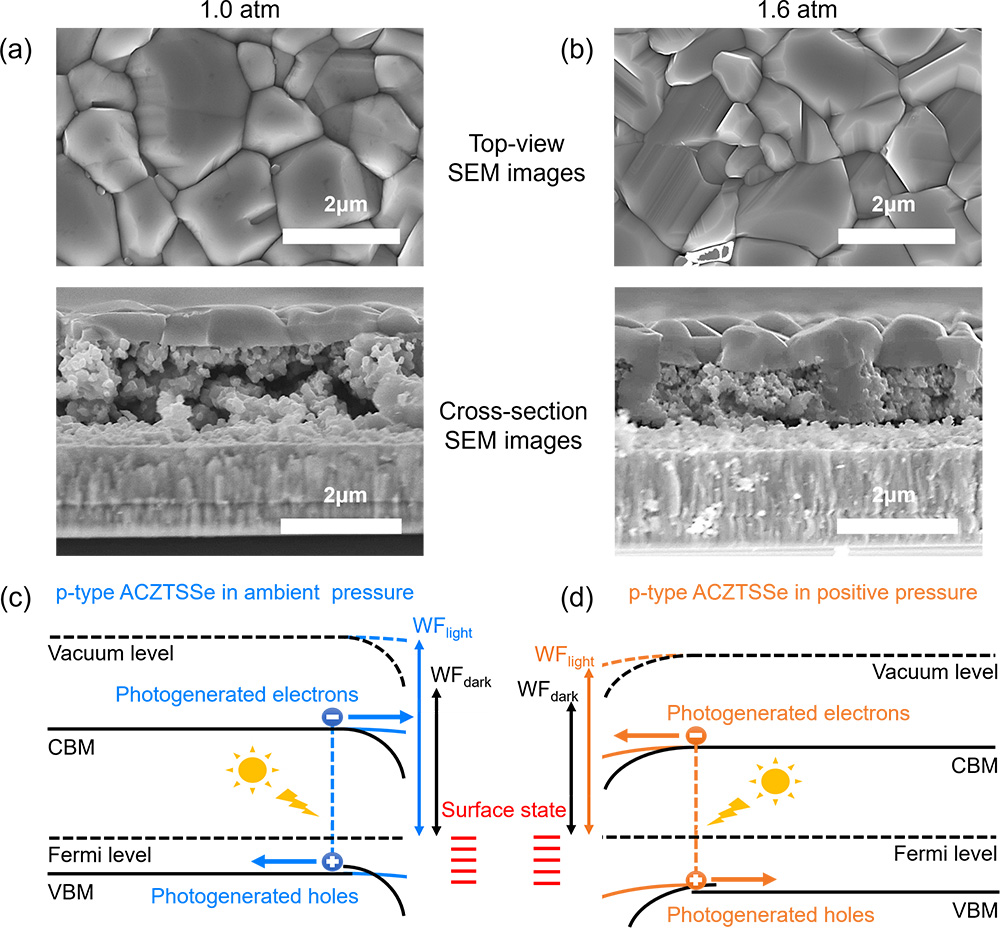Chinese Researchers Realize 13.8% Certified Efficiency of Emerging Kesterite Solar Cells
Date:14-04-2023 Print
Recently, a research group led by Prof. Qingbo Meng from Institute of Physics, Chinese Academy of Science (IOP, CAS) and Prof. Hao Xin from Nanjing University of Posts and Telecommunications refreshed 13.8% certified efficiency of emerging kesterite solar cells (CZTSSe) (by National PV Industry Measurement and Testing Center, NPVM).
The work entitled with "Control of the phase evolution of kesterite by tuning of the selenium partial pressure for solar cells with 13.8% certified efficiency" was published in Nature Energy on April 13, 2023.
Kesterite Cu2ZnSn(S, Se)4 (CZTSSe) as one of most competitive thin-film photovoltaic materials, exhibits attractive advantages such as earth-abundant elemental reserves, optimal bandgaps for PV technology, high stability and so on. Currently, CZTSSe solar cells presented power convention efficiency (PCE) of 13% based on environmentally friendly solution systems, which have shown attractive application prospects. However, large open-circuit voltage deficit (VOC, def) still restricts the further enhancement of the device performance, primarily due to high deep-level defects in the CZTSSe absorber.
In this study, the researchers regulated kinetic process of CZTSSe phase evolution by controlling positive chamber pressures. Under positive chamber pressures, the phase evolution process can be delayed to high temperature (> 400°C). Besides, it will avoid complex phase evolution pathways and harmful secondary phases, and achieve high crystalline CZTSSe absorber with fewer defects. Finally, the kesterite solar cell presents 14.1% PCE (total area) and a certified 13.8% PCE (total area), which is the highest result so far.
Researchers applied modulate transient photovoltage/photocurrent measurement (m-TPV/TPC) to investigate the carrier dynamics process of kesterite solar cells. They found that under a positive chamber pressure, the bulk defects are reduced by around one order of magnitude, and back interface contact property is improved as well. This method had been innovatively developed by Prof. Meng's group and can comprehensively probe the charge dynamics and charge loss of a variety of solar cell.
This study provides important insights into selenization mechanism of kesterite absorbers and explores a new way of kinetic regulation strategy to simplify the phase evolution path to efficient kesterite solar cells.
The study was supported by the National Natural Science Foundation of China.

Fig. 1 Measured curves of selenium partial pressure and certified kesterite solar cell photovoltaic report. (Image by Institute of Physics)

Fig. 2 Morphologies and band alignments of kesterite absorbers under ambient pressure and positive pressure. (Image by Institute of Physics)
Contact:
Institute of Physics
MENG Qingbo
Email:qbmeng@iphy.ac.cn
Key words:
Kesterite; phase evolution; crystal growth; thin film solar cells
Abstract:
This study regulates the kinetic process of phase evolution by precisely controlling positive chamber pressure. Good crystalline quality kesterite (CZTSSe) films turns precursors into kesterite in a single step using low partial pressure of selenium and corresponding solar cells exhibited 13.8% certified efficiency.

